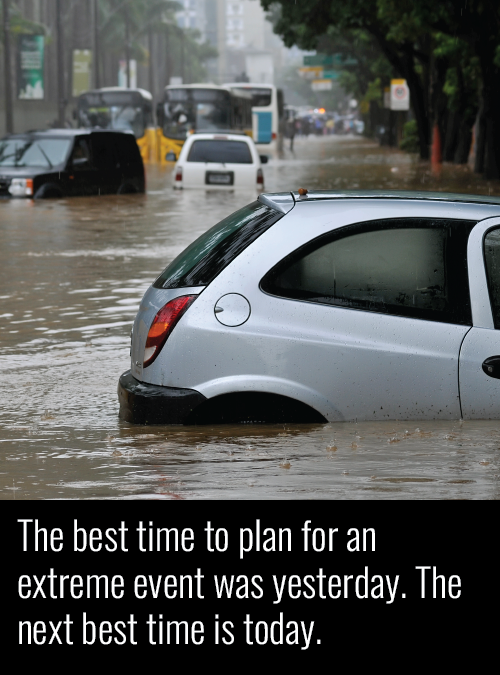
2023 is already the warmest year on record, and extreme weather events like hurricanes, wildfires, droughts, floods and tornados are becoming more frequent and intense. Here are some ways to future-proof your plasma operations.
At Stough, we are working with clients to build for our warmer future.


1. Preparing our Infrastructure for a New Normal
People in every field are looking at climate-resilient infrastructure. Are your centers ready for tomorrow?
Considerations include:
- Toughening the outside envelope of the building to withstand strong storm forces
- Implementing flood and storm protection measures
- Reducing your carbon footprint and reliance on fossil fuels
- Making sure there is no loss of heat or conditioned air through the storefront window or other parts of the building envelope
- Using Low-E (emissivity) double-paned windows and doors made of vacuum-insulating glass
- These types of windows also eliminate noise from the street
- Installing solar panels
- Using energy-efficient lighting and HVAC systems
- Making sure there is no loss of heat or conditioned air through the storefront window or other parts of the building envelope
- Replacing black EPDM roofs with TPO white roofs to reflect, rather than absorb heat
- Instituting water conservation measures to help ensure a sustainable supply
It is a good idea to have your building analyzed every few years for heat/cooling loss. You could be losing energy from deteriorated caulk or brickwork, or through a gap in the plenum, among other places.
Back To Top2. Backup Generator for Power Losses
Every plasma center should have, at a minimum, a backup generator that can power the freezers in the event of a power loss. Ideally, the generator should be big enough to run the entire center.
Why do you need a generator on hand at all times?
a. During power outages, generators can be hard to find
b. The typical plasma center fallback, dry ice, is dangerous for employees (sucks oxygen out of freezers) and can also be hard to find during power emergencies
Relative to the cost of the product you will protect, the cost of a generator is low.
Back To Top
3. Being Ready for an Emergency
Beyond auxiliary power, you need plans in place in case of an extreme weather event. Your Emergency Plan should include:
a. Evacuation plans
b. Emergency communication systems
c. Supply chain disruption plans
i. Contingency plans
ii. Backup suppliers
d. Preparations for water scarcity
e. Health and safety concerns, such as the potential for heat-related illnesses affecting donors, staff and visitors
Your plan needs to be shared often with donors and staff so they will react calmly and helpfully in the event of a crisis.
Back To Top
4. Being Part of the Solution
Visibly collaborating with community leaders on common concerns is a great way to improve your image with donors, staff and neighbors. It can also help make your local area more livable now and in the future.
You could:
• Organize awareness campaigns about the changing climate
• Model and promote sustainable practices
• Partner with local organizations working on climate resilience
Sharing resources, expertise and information can lead to more efficient adaptation strategies.
Data is your friend
Regularly monitoring climate-related data, such as weather patterns and climate projections, can help you anticipate potential risks and strategize accordingly.
Data-driven decision-making can make it easier to prepare for change. For example, some plasma companies are diversifying geographically to include regions less vulnerable to climate-related disruptions.
Back To Top